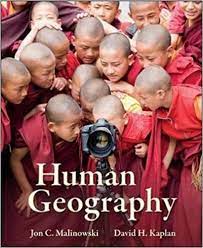Test Bank Human Geography 1st Edition by Jon Malinowski
Digital item No Waiting Time Instant DownloadAuthor David H Kaplan ProfessorInstant DeliverySecure Multi Payment Options
In Stock
Original price was: $55.00.$20.00Current price is: $20.00.
Test Bank Human Geography 1st Edition by Jon Malinowski
Chapter 04
Geography of Health and Disease
Multiple Choice Questions
1. Health and geographyA. are closely related considering geographers deal with environment and culture.B. have little in common and are rarely viewed together.C. do not mix because such things should be left to health care professionals.D. are as different as oil and water since health has no geographic implications.
Bloom’s Level: RememberSection: 4ATopic: Health and DiseaseType: Multiple Choice
2. Which of the following is not an example of an environmental influence that could affect health?A. Swampy areas with many mosquitoes that transmit disease.B. A person’s bad knees from playing football excessively.C. Sailors getting scurvy in times of exploration due to lack of vitamin C.D. River blindness cause by drinking parasite-infected water.
Bloom’s Level: ApplySection: 4ATopic: Health and DiseaseType: Multiple Choice
3. Love canalA. affected residents who found out their neighborhood was a toxic waste dump.B. spurred the diffusion of aids as a place for homosexual activity.C. was an agricultural experiment in genetically engineered corn seed.D. has one of Europe’s highest rates of cancer.
Bloom’s Level: RememberFigure: 4A.01Section: 4ATopic: Health and DiseaseType: Multiple Choice
4. The practice of polygyny in parts of Africa is important becauseA. many animals might be affected by the polygyny worm.B. its association with Love Canal’s syndrome is undeniable.C. HIV/AIDS can be transmitted to women and then to many children.D. cattle can be readily infected, and so can milk and dairy products.
Bloom’s Level: AnalyzeSection: 4ATopic: Health and DiseaseType: Multiple Choice
5. It is unlikely that the deadly Ebola virus will be broadly diffused becauseA. it kills rural African people within two weeks before they can migrate far.B. it kills mosquitoes within hours of infection so the disease is contained locally.C. it mutates so quickly that wide dispersal is unlikely.D. it is a virus that is generally unsociable and affected only by insults.
Bloom’s Level: AnalyzeSection: 4ATopic: Health and DiseaseType: Multiple Choice
6. Continued climate change couldA. cause more tainted food and drink, increasing disease.B. cause more types of diseases to be dispersed through populations.C. cause an excess of smallpox and sleeping sickness.D. cause more genetically transmitted diseases.
Bloom’s Level: ApplyFigure: 4A.02Section: 4ATopic: Health and DiseaseType: Multiple Choice
7. Examining the map of SARS the most likely reason Africa was not affected isA. people there are generally immune because of genetics related to race.B. that parasitic diseases take precedence and wipe out SARS.C. that African people are very healthy and thus resist the disease.D. not as many people travel to Africa and internal migration is limited.
Bloom’s Level: AnalyzeFigure: 4A.03Section: 4ATopic: Health and DiseaseType: Multiple Choice
8. The main lesson learned from polio might beA. unclean health habits lead to more disease.B. parasites might infect us at any time regardless of economic status.C. sometimes improvements in lifestyle increase susceptibility to certain diseases.D. one can never be too cautious in disease prevention.
Bloom’s Level: RememberFigure: 4B.01Section: 4BTopic: Health and DiseaseType: Multiple Choice
9. Regarding polio-having better sanitation and smaller families led toA. less contact with the disease, thus a lack of development of disease immunity.B. more contact among fewer siblings giving the virus more time to develop stronger among fewer people.C. greater chances of physical transfer of disease from parent to child.D. the unlikely transmission of disease from wood in new suburban homes.
Bloom’s Level: RememberFigure: 4B.01Section: 4BTopic: Health and DiseaseType: Multiple Choice
10. Which is the best example of a physical insult (or stimuli)?A. A mosquito transmitting west Nile virus.B. Falling out of a tree while trimming.C. Getting HIV from a used needle.D. Suffering depression at Christmastime.
Bloom’s Level: ApplySection: 4BTopic: Health and DiseaseType: Multiple Choice


Reviews
There are no reviews yet.